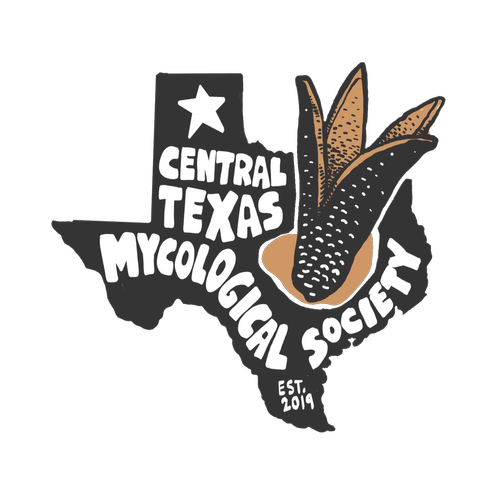




🌈🐶💩The September mushroom of the month is the 𝘗𝘪𝘴𝘰𝘭𝘪𝘵𝘩𝘶𝘴 𝘢𝘳𝘩𝘪𝘻𝘶𝘴, colloquial names - Dead Man’s Foot, Bohemian truffle and Dog Turd Fungus, used for dyeing fabric and is also a mycorrhizal inoculate and helps plants establish roots. Swipe to learn more about this fascinating mushroom.
🙌 to @chaoticmessy for naming that mushroom correctly and becoming the 1,301th member of Central Texas Mycology!
Become a supporting member to stay dialed-in with events & discover next month’s mystery mushroom.
What is that thing?
Many people find themselves asking this question when coming across Pisolithus in the wild, which has led to it being called by many interesting colloquial names - Dead Man’s Foot, Bohemian truffle and Dog Turd Fungus, to name a few. It is a prolific species that occurs worldwide, sometimes growing by itself and other times mycorrhizal with pine, oaks and cedars. The fruiting body is 5–30 cm tall and 4–20 cm wide, with a thin yellow-brown to brown exterior layer and the spores are brown.
natural colors with Pisolithus
The common name of Dyeball refers to the traditional use of this fungus as a natural dye for textiles. Pisolithus starts out as a club-shaped dark brown object, that when cut open shows those ‘peas’ — little compartments in which the spores are formed, resembling what has been described as ‘rice crispies in tar’. In this stage, the mushroom is firm, wet, and will stains whatever it touches. In the next phase the top matures, the outer wall disintegrates and a dark chocolate brown dry spore mass is visible. The spores have pigmented hydrophobic walls, making them effective for long distance travel and also a powerful coloring agent.
is it edible?
While the Dyeball is not an edible mushroom for humans, it is highly nutritious for plants, especially trees! Because it forms mycorrhizas with almost any kind of root, this ectomycorrhizal fungus is frequently used by foresters (and in recent years by gardeners, too) as the basis of a soil inoculant to promote tree and plant growth - particularly in remediation of areas of degraded or polluted land or formerly clear-felled forest sites.

